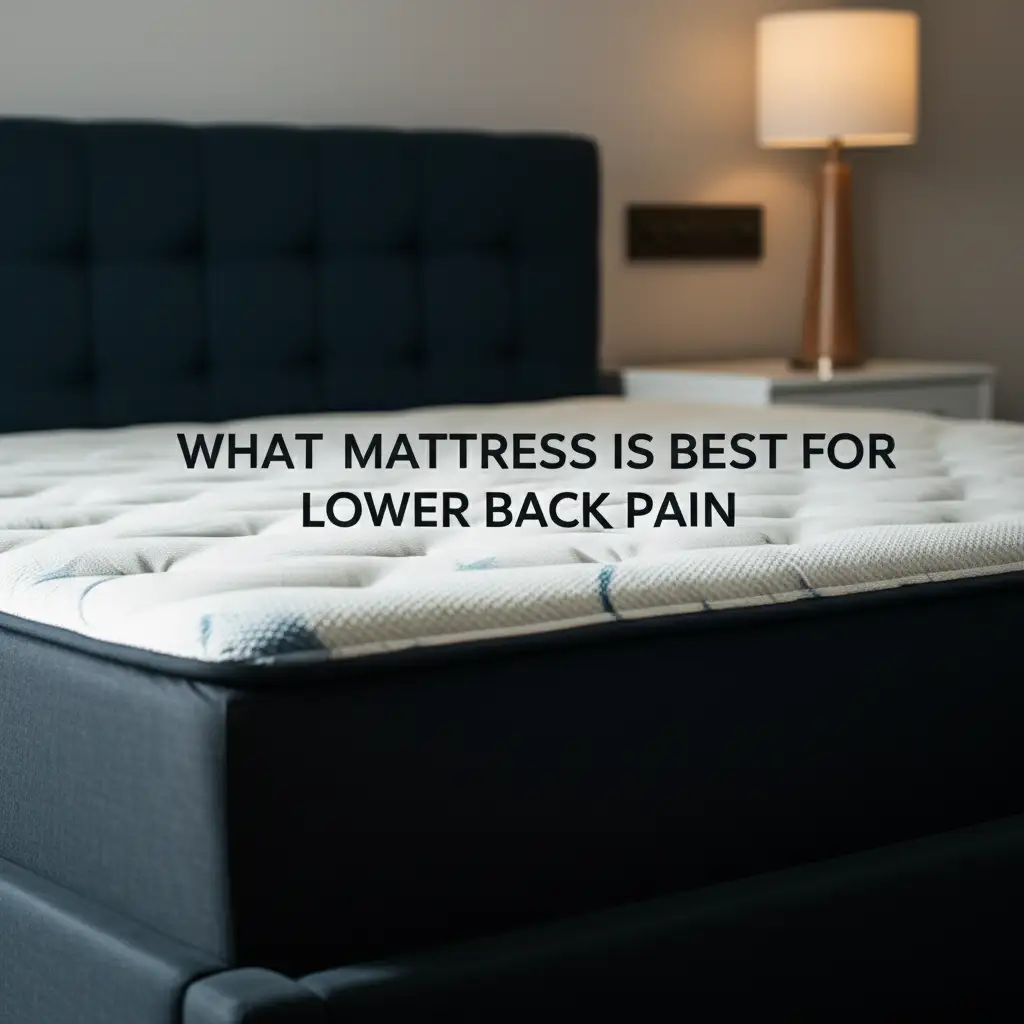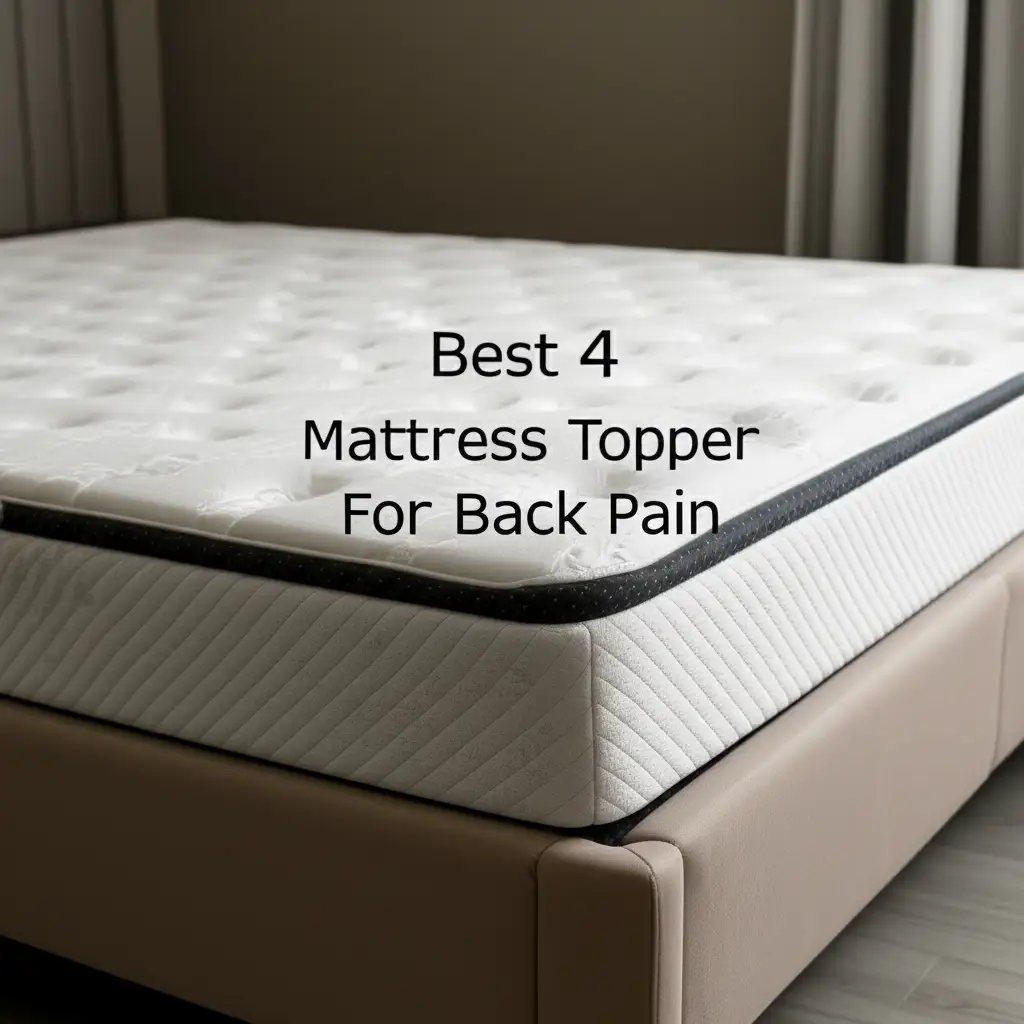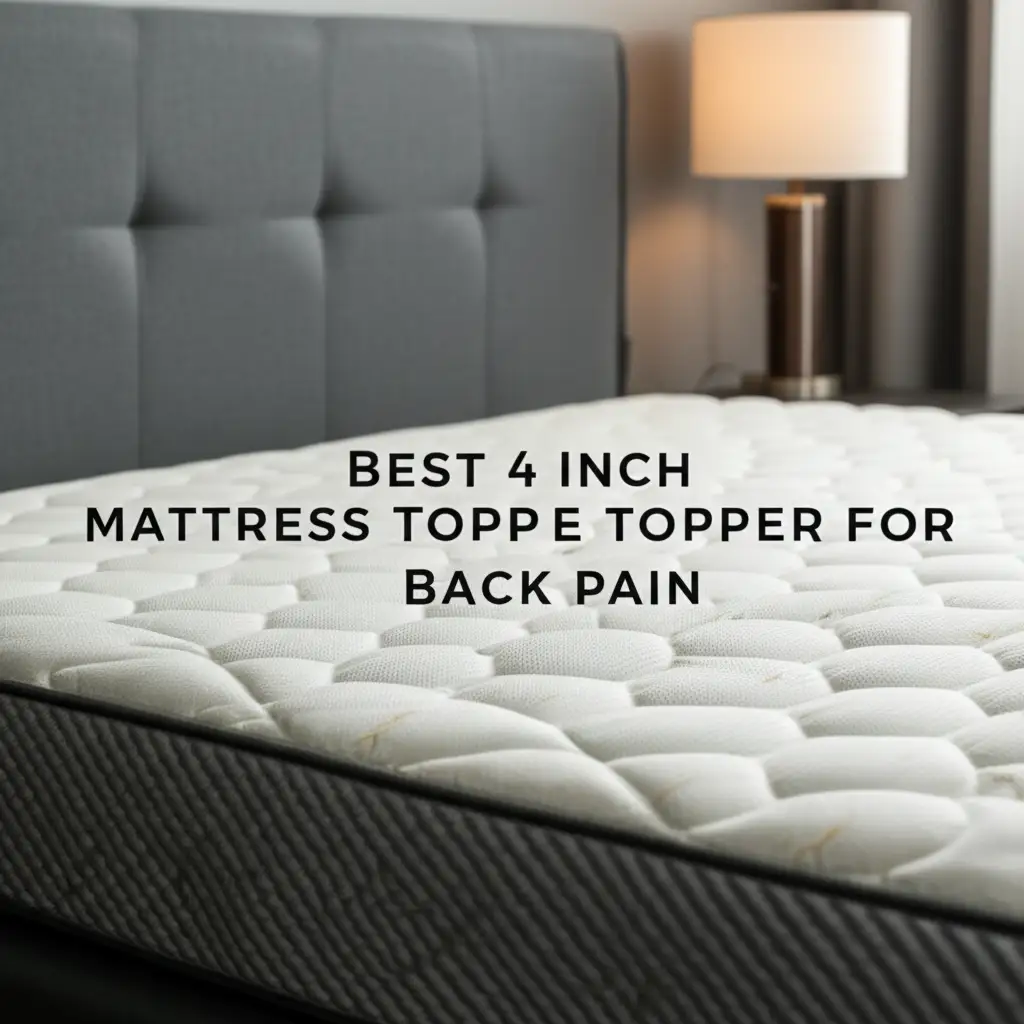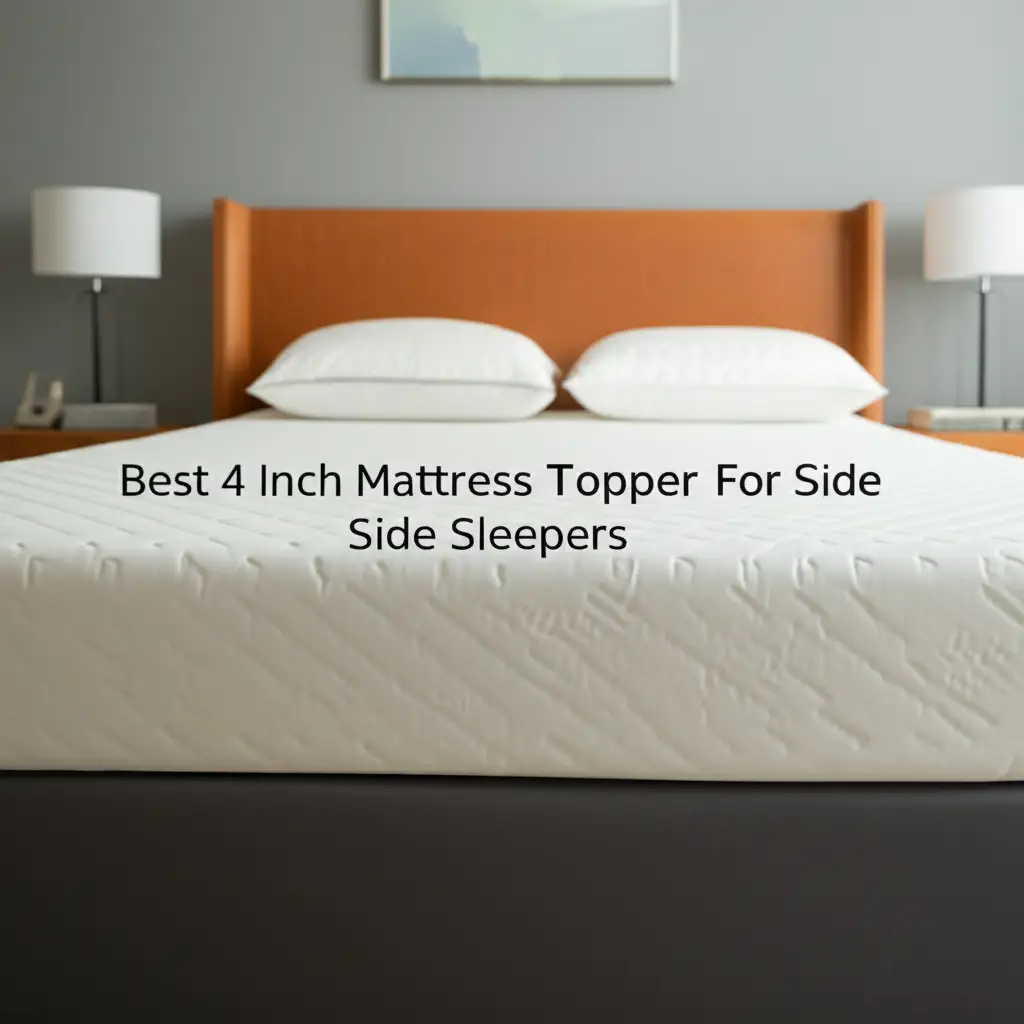· Mason Everett · Sleep Health · 17 min read
What Mattress Is Best For Lower Back Pain

Find the Best Mattress for Lower Back Pain Relief
Do you wake up with a stiff, aching lower back? You are not alone. Many people experience back pain, and often, the culprit is right under them: their mattress. A good mattress plays a critical role in how your back feels each morning. It supports your spine and allows your muscles to relax.
Choosing the best mattress for lower back pain can change your daily life. An old or unsuitable mattress can worsen pain. It fails to support the natural curve of your spine. This article helps you understand what mattress features matter most for back health. We will explore different mattress types and their benefits. We will also discuss how to choose one that offers proper spinal alignment and reduces pressure points.
Takeaway
- Proper Support is Key: A mattress must keep your spine in a neutral position. It should not sag or be too firm.
- Balance Firmness and Comfort: Medium-firm mattresses often offer the best support and pressure relief.
- Consider Mattress Type: Memory foam, latex, and hybrid mattresses are popular choices for back pain. Each offers unique benefits.
- Prioritize Spinal Alignment: Your sleep posture affects how your mattress supports you.
- Test Before You Buy: Use trial periods to ensure the mattress truly helps your back pain.
The best mattress for lower back pain provides proper spinal alignment and adequate support. It balances firmness with contouring to relieve pressure points. This allows the spine to rest in its natural curve, promoting comfort and reducing morning stiffness.
Understanding Lower Back Pain and Sleep
Lower back pain affects millions of people. It can be a dull ache or a sharp, sudden jolt. This pain often worsens during sleep or upon waking. Your mattress significantly influences your spine’s position throughout the night. If your mattress does not offer enough support, your spine can fall out of alignment.
Imagine your spine as a gentle ‘S’ curve. A good mattress helps maintain this curve. It fills the gaps at your lower back while supporting heavier areas like your hips and shoulders. A mattress that is too soft allows your hips to sink too deeply. This creates an unnatural spinal curve. A mattress that is too firm pushes against your natural curves. This also causes misalignment and pressure points.
Your sleep posture also interacts with your mattress. Side sleepers need a mattress that cushions shoulders and hips. This keeps the spine straight. Back sleepers need support under the lumbar region. This prevents the lower back from flattening. Stomach sleepers should generally avoid a mattress that causes their hips to sink. This can overextend the lower back. Finding the right balance between firmness and conformity is important for pain relief.
The quality of your sleep affects your overall health. When you sleep well, your body can repair itself. Chronic back pain disrupts sleep. This creates a cycle where pain leads to poor sleep, and poor sleep worsens pain. Investing in a suitable mattress breaks this cycle. It promotes restful sleep and reduces discomfort. Think about how important a good mattress is for your overall well-being. A comfortable bed can make a big difference in how you feel daily. You can learn more about how important sleep surfaces are at How Important Is A Good Mattress.
Key Mattress Features for Back Pain Relief
When you seek a mattress for lower back pain, certain features stand out. These features directly influence how your spine is supported. They also dictate how well pressure points are relieved. Understanding them helps you make an informed decision.
Support and Firmness: These two terms are often confused but are distinct. Support refers to the mattress’s ability to keep your spine aligned. A supportive mattress prevents sagging. Firmness refers to how hard or soft the mattress feels. For lower back pain, a medium-firm mattress is often recommended. This firmness level provides good support while still contouring to your body. Too soft, and you sink. Too firm, and it creates pressure.
The best firmness level depends on your body weight and sleep position. Lighter individuals might prefer a slightly softer medium-firm. Heavier individuals usually need a firmer medium-firm. Side sleepers often need a bit more give for their shoulders and hips. This allows proper spinal alignment. Back sleepers need firm support under the lower back area.
Pressure Relief: A good mattress distributes your body weight evenly. This prevents pressure from building up in specific areas. When you lie down, your hips and shoulders are heavier. These areas can create pressure points if the mattress does not contour properly. Mattresses with excellent pressure relief cushion these areas. They reduce stress on your joints and muscles.
Spinal Alignment: This is the most critical feature for back pain. Your mattress should help maintain your spine’s natural curve. When you lie on your side, your spine should be straight. When you lie on your back, your lower back should have gentle support. A mattress that promotes good spinal alignment prevents awkward angles. It keeps your posture neutral throughout the night. This allows muscles to relax and heal. Without proper alignment, your muscles work harder all night. This leads to morning stiffness and pain.
Mattress Types and Their Impact on Back Pain
Different mattress types offer unique support systems. Each type interacts with your body in a distinct way. Understanding these differences helps you choose the best option for your lower back pain.
Memory Foam Mattresses
Memory foam mattresses are famous for their contouring ability. This material softens with body heat. It molds precisely to your shape. This creates a custom support system for your curves. For people with lower back pain, this means excellent pressure relief. The foam distributes weight evenly. It reduces stress on sensitive areas.
Memory foam helps keep the spine aligned by filling in gaps. It supports the lumbar curve when you lie on your back. It cradles hips and shoulders for side sleepers. A potential drawback is heat retention. Some memory foam mattresses can trap heat. Newer designs often include cooling gels or open-cell structures to address this. You can combine a memory foam mattress with a luxury mattress pad for added comfort and specific features. A What Is A Luxury Mattress Pad article can give you more details.
Latex Mattresses
Latex mattresses offer a different feel than memory foam. They provide a buoyant, responsive support. Latex is known for its durability and natural properties. It contours to the body similar to memory foam but with more bounce. This prevents the feeling of sinking too deeply.
For lower back pain, latex mattresses offer firm, consistent support. They support the spine effectively. They also relieve pressure points. Latex is naturally breathable. This makes it a good choice for those who sleep hot. It is also resistant to dust mites and allergens. This makes it a healthy sleep surface. Latex mattresses often last a long time.
Innerspring Mattresses
Traditional innerspring mattresses use a coil support system. These coils provide a bouncy feel. They offer a more generalized support than conforming foams. Some modern innerspring mattresses have pocketed coils. Each coil moves independently. This offers better contouring and motion isolation.
For back pain, choose an innerspring mattress with a thick comfort layer. This layer can be foam or pillow-top. It adds pressure relief. A robust coil system provides good support. However, older or lower-quality innerspring mattresses can sag over time. This leads to poor spinal alignment. Look for models with targeted lumbar support if considering an innerspring.
Hybrid Mattresses
Hybrid mattresses combine the best features of innerspring and foam mattresses. They typically have a base of pocketed coils. On top, they feature layers of memory foam, latex, or other specialized foams. This construction provides excellent support from the coils. It also offers superior pressure relief from the foam layers.
Hybrid mattresses are often a great choice for lower back pain. They offer the bounce and airflow of an innerspring. They also have the contouring and pressure relief of foam. This combination promotes spinal alignment. It reduces pain effectively. Their balanced feel appeals to many sleepers. A hybrid can also offer good edge support, which helps you use the entire mattress surface.
Optimal Spinal Alignment: Your Sleep Posture Matters
Achieving optimal spinal alignment is critical for easing lower back pain. Your mattress plays a major role, but your sleep posture also contributes significantly. The goal is to maintain your spine’s natural curves while you sleep. This reduces stress on your discs, joints, and muscles.
Back Sleepers
If you sleep on your back, your mattress needs to support the natural curve of your lower back. A mattress that is too soft allows your hips to sink too deeply. This flattens your lumbar curve. A mattress that is too firm does not allow your lower back to settle properly. A medium-firm mattress is often ideal for back sleepers. It supports your spine without creating pressure points. Placing a small pillow under your knees can also help maintain the natural curve of your lower back. This slight elevation further reduces strain.
Side Sleepers
Side sleepers need a mattress that cushions their shoulders and hips. These are the widest parts of the body. If the mattress is too firm, these areas will not sink enough. This leads to your spine bending uncomfortably. If the mattress is too soft, your hips and shoulders might sink too much. This causes your spine to curve downward. A medium-soft to medium-firm mattress often works best for side sleepers. It allows these pressure points to sink slightly while keeping your spine straight. A pillow between your knees can also help align your hips and spine.
Stomach Sleepers
Sleeping on your stomach is generally not recommended for lower back pain. This position often forces your spine into an unnatural arch. This puts significant strain on your lower back. If you must sleep on your stomach, choose a firmer mattress. This prevents your hips from sinking too deeply. You might also consider placing a thin pillow or no pillow under your head. Placing a thin pillow under your pelvis can reduce the arch in your lower back. However, altering your sleep position is often the best solution for stomach sleepers with back pain. You can learn more about how mattress quality affects other pain areas, like neck pain, by reading Can Mattress Cause Neck Pain.
Regardless of your preferred position, pay attention to how your body feels. Your spine should feel relaxed and supported. There should be no noticeable gaps between your body and the mattress. This ensures proper alignment and reduces strain on your lower back.
Importance of Mattress Durability and Trial Periods
When you invest in a mattress for lower back pain, you want it to last. Durability ensures your mattress maintains its supportive properties over time. A sagging mattress loses its ability to keep your spine aligned. This can bring back or worsen your pain.
Mattress Durability
The longevity of a mattress depends on its materials and construction. High-density foams and quality coils generally last longer. For example, latex mattresses are known for their exceptional durability. They can last 15 years or more. High-quality memory foam also offers good longevity. Innerspring mattresses, especially budget models, might show wear and tear sooner.
Checking the warranty is a good indicator of durability. A longer warranty often means the manufacturer trusts their product to last. However, warranties usually cover manufacturing defects, not natural softening over time. Regular mattress rotation can also extend its life. This helps distribute wear evenly. You can find out more about this process at How To Rotate Mattress By Yourself. A durable mattress maintains its shape and support for many years. This means consistent relief for your lower back.
The Role of Trial Periods
A trial period is essential when buying a mattress, especially for back pain. It is hard to know if a mattress is right for you after just a few minutes in a store. Your body needs time to adjust. Most online mattress companies offer risk-free trial periods. These often range from 90 to 365 nights.
During the trial, pay close attention to your body. Do you wake up with less pain? Does your back feel supported? Is there any new discomfort? Use the entire trial period if possible. It takes several weeks for your body to fully adapt to a new sleep surface. If the mattress does not improve your pain, you can usually return it for a full refund or exchange. This takes the pressure off making a perfect decision right away. It ensures you find the best mattress for your unique lower back needs.
Personal Factors and Customization for Back Pain Relief
Finding the best mattress for lower back pain is not a one-size-fits-all solution. Your individual characteristics play a significant role. What works well for one person might not work for another. This is where personal factors and customization options become important.
Body Weight and Type
Your body weight and shape influence how a mattress feels and performs. Heavier individuals typically need a firmer mattress. A firmer surface prevents excessive sinking. This helps maintain spinal alignment. Lighter individuals might find a slightly softer mattress more comfortable. They do not need as much resistance to prevent bottoming out. Also, consider your body type. Wider hips or shoulders require a mattress that can contour more effectively in those areas. This ensures proper spinal alignment when lying on your side.
Sleep Position
As discussed, your preferred sleep position dictates specific support needs. Back sleepers need lumbar support. Side sleepers need pressure relief at the hips and shoulders. Stomach sleepers need firm overall support to prevent spinal arching. Some people change positions during the night. If you are a combination sleeper, you need a mattress that adapts well to multiple positions. A medium-firm hybrid or memory foam mattress often suits combination sleepers best. It offers a balance of contouring and support.
Existing Medical Conditions
Beyond lower back pain, you might have other medical conditions. These can influence your mattress choice. For instance, if you have arthritis, you might need extra pressure relief. If you have hip pain, cushioning around the hips is crucial. Always consult your doctor or physical therapist. They can offer advice on the best sleep posture and mattress type for your specific condition. Their guidance can complement your research.
Customization Options
Many mattress companies offer customization. This includes adjustable firmness levels. Some mattresses come with split firmness for couples. Each side can be different. Mattress toppers offer another layer of customization. A graphite mattress topper can add cushioning. It also helps with temperature regulation. Learn more about them at What Is A Graphite Mattress Topper. Toppers can modify the feel of your existing mattress. They can add softness or support without buying a new bed. Adjustable beds also allow you to elevate your head or feet. This can relieve pressure on your lower back. This helps some people find a comfortable position that reduces pain.
When to Replace Your Mattress
Even the best mattress for lower back pain will eventually need replacing. Mattresses wear out over time. They lose their ability to provide proper support and comfort. Knowing when to replace your mattress is vital for continued back pain relief and good sleep health.
Signs of a Worn-Out Mattress
There are clear signs your mattress is past its prime. The most obvious is visible sagging or indentations. If you see a dip where you usually sleep, it means the support layers are breaking down. This sagging leads to poor spinal alignment. Another sign is waking up with new or increased back pain. If you used to sleep comfortably but now experience stiffness, your mattress might be the cause.
Noise from your mattress can also indicate wear. Old innerspring mattresses might creak or squeak. This means the coils are worn. Changes in your sleep quality are another clue. If you toss and turn more or struggle to find a comfortable position, your mattress might not support you anymore. A mattress that is too old can also harbor allergens and dust mites. This affects overall sleep hygiene.
Average Mattress Lifespan
The lifespan of a mattress varies significantly by type and quality.
- Innerspring mattresses: Typically last 7-10 years. Lower quality models might last less.
- Memory foam mattresses: Can last 8-12 years. High-density foams generally last longer.
- Latex mattresses: Often the most durable, lasting 10-15 years or more. Natural latex tends to last longer than synthetic.
- Hybrid mattresses: Their lifespan depends on the quality of both the coils and foam layers. They generally last 7-10 years.
These are general guidelines. Your body weight, sleep habits, and how you care for your mattress influence its longevity. For example, rotating your mattress regularly helps distribute wear. This can extend its life. You can learn more about how long specific types of mattresses last, like ComforPedic, at How Long Does A Comforpedic Mattress Last.
The Impact of an Old Mattress on Back Pain
An old, unsupportive mattress can actively contribute to lower back pain. When your mattress sags, it does not support your spine’s natural curves. This forces your muscles to work harder overnight. They try to keep your spine aligned. This leads to muscle stiffness, aches, and pain. Over time, poor spinal alignment can also put stress on your spinal discs and joints. This worsens existing conditions or causes new pain. Replacing an old mattress is a key step in managing and preventing lower back pain. It ensures your body receives the consistent support it needs for restorative sleep.
FAQ Section
What firmness level is best for lower back pain?
A medium-firm mattress is often recommended for lower back pain. It provides a good balance of support and pressure relief. This firmness level prevents excessive sinking while still contouring to your body’s natural curves. However, individual preference and body weight can influence the ideal firmness.
Can a soft mattress cause lower back pain?
Yes, a mattress that is too soft can cause or worsen lower back pain. If a mattress is too soft, your hips and mid-section might sink too deeply. This creates an unnatural “hammock” effect for your spine. This misalignment puts strain on your lower back muscles and ligaments.
Is memory foam good for lower back pain?
Memory foam mattresses can be excellent for lower back pain. They contour closely to your body. This provides customized support and superior pressure relief. This helps maintain spinal alignment and reduces stress on painful areas. However, choose a medium-firm memory foam to ensure adequate support.
How often should I replace my mattress if I have back pain?
You should replace your mattress every 7-10 years on average, though this varies by mattress type. If you have back pain, replace it sooner if you notice sagging, indentations, or increased morning pain. An old mattress loses its ability to support your spine properly.
Can a mattress topper help with lower back pain?
A mattress topper can offer temporary relief or adjust the feel of your current mattress. If your mattress is slightly too firm, a soft topper can add cushioning. If it’s too soft, a firm topper might add some support. However, a topper cannot fix a severely sagging or unsupportive mattress.
What sleep position is best for lower back pain?
Sleeping on your back or side is generally better for lower back pain. Back sleeping with a pillow under your knees helps maintain spinal curve. Side sleeping with a pillow between your knees keeps hips and spine aligned. Stomach sleeping often strains the lower back and should be avoided if possible.
Conclusion
Finding the best mattress for lower back pain is a significant step towards better sleep and improved daily comfort. We explored how different mattress types—memory foam, latex, innerspring, and hybrid—offer unique benefits. We emphasized the importance of proper support, firmness, and pressure relief to maintain spinal alignment. Your body needs to rest in a neutral position throughout the night.
Remember that personal factors, like your body weight and sleep position, play a crucial role in your choice. Always consider a mattress with a generous trial period. This allows your body to adjust and confirm it truly alleviates your pain. An old, unsupportive mattress often contributes to pain. Knowing when to replace it is vital for your long-term back health. I truly hope this guide helps you find the perfect sleep surface. A good mattress means healthier mornings and a happier back. Choose wisely for lasting comfort and pain relief.





